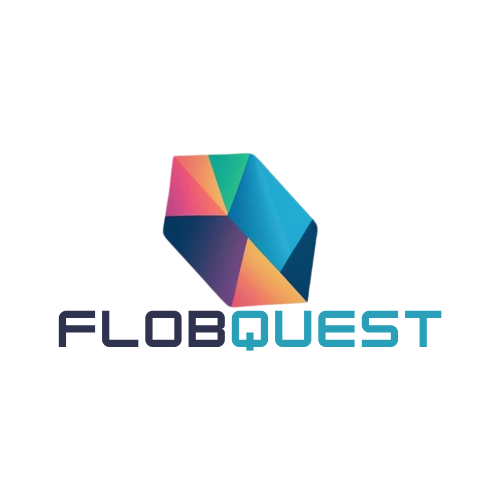Annunci
tech innovation startups are shaping the 2025 market where AI, green energy, and Web3 capture attention and capital. As of year‑to‑date 2025, global venture funding tops $250B, and companies like DataRobot, Plug Power, and Climeworks show how applied change looks in practice.
You will learn clear patterns you can adapt, not one‑size‑fits‑all answers. This guide blends funding signals, real company examples, and practical ideas so you can test low‑risk pilots before scaling.
Expect analysis of market pulse, AI for operations and product, trust and compliance, Web3 use cases, autonomy, healthtech, climate and energy, go‑to‑market, and capital efficiency. Each section links back to tools, data, and trends so you can shortcut research time.
Note: these are educational observations, not financial advice. Results vary by your stage, team, and industry, so take notes on what fits your business and consult mentors or specialists when needed.
Market Pulse: Where Growth and Funding Are Flowing Now
Capital flows are clustering where measurable returns and clear use cases meet market demand. Year‑to‑date 2025, global VC investment tops $250B, with AI, green energy, and blockchain capturing the lion’s share of funding.
Annunci
AI draws outsized capital because platforms like DataRobot show enterprise ML can move from pilot to production with measurable productivity gains.
- Green energy: investors back companies such as Plug Power and QuantumScape because storage and hydrogen infrastructure enable decarbonization across transport and manufacturing.
- Blockchain: infrastructure providers like Alchemy and custody services make it easier for institutions to participate without excessive friction.
- How to read momentum: prioritize repeat customers, partner ecosystems, and regulatory milestones over valuation headlines.
Practical tip: scan roadmaps, customer case studies, hiring trends, and pilot-to-production conversions. Align your product roadmap with durable demand drivers—cost reduction, compliance, and risk management—rather than chasing buzz.
“Track pilots converted into production and cohort retention to separate hype from traction.”
Annunci
AI as a Growth Engine: From Productivity to New Products
Generative AI is reshaping how you run operations, build products, and ship code. Start with a focused pilot and measure clear KPIs before scaling.
Operations and content: platforms like DataRobot speed ML deployment, and Cohere lets your developers bring industry-specific data to NLP models. That combination upgrades automation, personalization, and repeatable content workflows.
Generative systems for ops and content
Use models to draft support summaries, auto-generate product copy, or route tickets. Track cycle time for content and error rates for automated replies.
Applied AI in regulated workflows
Legal and health services show practical patterns. Harvey accelerates contract review; Overjet offers FDA-cleared dental imaging that improves diagnosis and admin work. Design audits and human-in-the-loop checks for any high-stakes application.
Developer velocity with AI assistants
Anysphere’s Cursor understands large codebases and reports 20–35% velocity gains. Choose software tools that integrate with your CI pipeline and measure backlog burn-down.
On-device and privacy-first models
webAI runs models locally to cut latency and recurring cloud costs. Combine on-device inference with data minimization and audit logging for compliance.
- KPIs: content cycle time, backlog burn-down, case-resolution error-rate.
- Pilot plan: pick one workflow, define success criteria, and expand after measurable gains.
- Guardrails: monitor model drift, test for bias, and document escalation paths.
“Start small, measure rigorously, and keep humans in the loop for high‑risk decisions.”
Building Trust at Scale: Cybersecurity and Compliance Foundations
When you bake strong controls into your platform early, customer trust follows and sales cycles shorten.
Start by mapping common attack surfaces: email, identity, and access. Abnormal Security uses AI to stop targeted email attacks without blocking valid traffic.
Silverfort offers agentless authentication and zero‑trust access with AI risk analysis. Persona handles identity proofing and KYC with document checks and biometrics to reduce fraud while keeping UX smooth.
Email and identity defenses
- Reduce email risk with AI detection and adaptive rules.
- Adopt agentless access controls to secure devices and systems.
- Implement identity proofing that balances security and conversion.
Automated audit readiness
Drata automates evidence collection for SOC 2 and ISO 27001, freeing your team from manual paperwork and accelerating audit readiness.
“Map controls to customer requirements early — it shortens enterprise sales cycles.”
Checklist: asset inventory, role-based access, logging, incident playbooks, third‑party reviews, and routine tabletop exercises. Track KPIs like time-to-remediate, phishing-report rates, and control coverage across systems.
These steps let your company scale securely. For a growing startup, they turn security from a hurdle into a growth enabler.
Web3, DeFi, and Digital Assets: Practical Enterprise Use Cases
Treat Web3 as an infrastructure-first layer that must prove observability, custody, and compliance before wide release. You want robust APIs, simulation, and monitoring so engineers can validate flows without user risk.
Developer tooling and monitoring
Tenderly E Alchemy reduce integration risk with gateways, simulations, and real-time alerts for EVM chains. Use their tools in an internal sandbox to run failure scenarios and measure latency, error rates, and rollback paths.
Institutional-grade custody and compliance
Anchorage Digital offers regulated custody, staking, and governance services so your finance and legal teams can approve pilots. Custody lowers operational and governance risk and simplifies bookkeeping for digital assets.
Real utility patterns
Spring Labs demonstrates fraud reduction via verified identity and selective data sharing that cuts lender exposure. Braintrust shows how a token-aligned talent marketplace can lower fees and align incentives for both clients and professionals.
- Start with internal sandboxes and controlled user groups.
- Validate KYC/AML, custody, and smart contract audits before production.
- Include total cost analysis—security, monitoring, and incident response—not just gas fees.
“Partner with vendors that offer detailed observability and clear rollback plans.”
These approaches let your platform and systems adopt distributed ledgers in measured steps. That reduces risk while unlocking concrete business applications for your company or startup.
Autonomy and Simulation: Accelerating Complex System Development
Simulation shrinks risk and expense, letting you stress-test scenarios before any hardware hits the road.
Simulation as an R&D multiplier
Applied Intuition’s physics-accurate virtual environments show how this works. The company raised $250M at a $6B valuation and reports that simulation can cut physical testing by 60–70% and speed development cycles by 40–50%.
Conclusione pratica: run libraries of rare edge cases in simulation first to validate behavior and reduce costly failures in field tests.
Autonomous logistics and mobility
Aurora advances autonomous vehicles for freight and passenger moves. You should stage deployment: start in constrained domains like yards and warehouses, then expand to suburban and urban routes.
- Look for regulatory pilots and insurer engagement as readiness signals.
- Seek OEM partnerships to share validation and lower integration risk.
- Measure safety metrics: scenario coverage, fail-safe activation rates, and post-incident reporting.
Home and labor automation signals
The Bot Company raised $150M at a $2B valuation to build AI-powered home and labor robots that pair robotics with large language models. That combo makes interactions more natural and easier to adopt.
Balance hardware-software co-design to control cost and reliability for devices and systems. Keep cross-functional teams—safety, legal, ops—documenting assumptions and updating risk registers as real-world data arrives.
Healthtech and Biotech: Precision, Regulation, and Patient Impact
AI-driven tools are shortening research cycles while raising new questions about validation and privacy. You should treat speed and safety as equal priorities when moving from lab to clinic.
AI-driven discovery and diagnostics
Insilico Medicine accelerates target discovery and molecule design with AI-assisted workflows. That reduces early-cycle time, but you must pair models with experimental validation.
Define preclinical milestones, document negative results, and require peer review before claiming efficacy.
Clinical AI and cleared devices
Overjet shows how FDA-cleared dental AI fits practice workflows. Cleared algorithms can improve diagnostic agreement and speed image reads while integrating into billing and coding.
- Metrics to track: diagnostic agreement rates, turnaround time, and patient follow-up adherence.
- Privacy-by-design: de-identification, role-based access, audit logs, and minimal retention.
- Build with clinicians: pilot at a single site, collect feedback, and iterate UX and documentation.
Personalization and data stewardship
23andMe teaches transparent consent and clear user value for genetic data. Users trust services that explain limits, give control, and secure sensitive records.
“Don’t overclaim efficacy; prioritize peer-reviewed evidence and post-market monitoring.”
Practical steps: align products to regulation, map billing paths, and run post-deployment surveillance to protect patients and your business.
No-Code and Product Velocity: Shipping Faster with Fewer Resources
No-code platforms let your team ship practical apps without lengthy development cycles. Glide turns a spreadsheet into a working app via drag-and-drop. That reduces build time and lets you focus on outcomes.
From spreadsheet to app: Glide for internal tools and workflows
Use Glide to create inventory trackers, CRM views, and project dashboards in hours. Non-technical users can own simple workflows and free engineers for core development.
- Quick wins: inventory, customer databases, and project tracking.
- Guardrails: assign ownership, set version control, and plan handoffs to avoid shadow IT.
- Measure ROI: track time-to-launch, adoption rate, and manual-task reductions.
Pilot-first: start with one team, standardize components, document governance, and only expand after you see measurable value.
“Enable users, keep security tight, and plan a migration path if an app outgrows no-code.”
Integrate Glide with existing services and a single source of truth. That protects data and keeps your business agile while limiting technical debt.
Ecommerce, Marketplaces, and Fulfillment: Turning CX into a Growth Loop
Great commerce blends live community moments with reliable delivery to keep customers coming back. Make your plan around three linked layers: engagement, fulfillment, and personalization.
Livestream and community commerce
Whatnot turns live events, creator-led sales, and real-time chat into a conversion flywheel. Creators drive urgency; chat builds trust; limited drops boost repeat visits.
Modern fulfillment networks
Flowspace helps you split inventory across nodes, optimize routing, and cut delivery times. Faster delivery raises NPS and lowers churn when you test placement by region.
Personalization engines
FERMAT personalizes on-site journeys with AI to tailor recommendations and layouts. That raises conversion and helps you surface high-margin items to the right customer.
- KPIs to watch: conversion rate, repeat purchase rate, delivery SLA adherence, and return reasons.
- Feedback loops: post-purchase surveys, live chat transcripts, and cohort analysis to refine experience.
- Rapid testing: A/B offers, placement tweaks, and one-node fulfillment changes before you scale.
“Design small experiments: measure lift, iterate, and only widen successful changes.”
Edtech and Workforce: AI Tools that Save Time for Teachers and Teams
Practical AI for schools focuses on cutting repetitive tasks so educators reclaim time for students. MagicSchool offers AI-assisted lesson planning, differentiated instruction, assessment creation, and IEP support so teachers draft quality content faster.
Instructional leverage with AI
How it helps: MagicSchool speeds up lesson drafts, builds rubrics, and suggests accommodations while keeping educator oversight.
- Run a pilot: pick one repetitive task, set weekly time-saved targets, and gather teacher feedback each week.
- Privacy: never share student PII, use approved platforms, and document AI use in policy files.
- Training: pair short workshops with peer coaching to sharpen prompts and classroom fit.
Success metrics: hours saved per week, rubric alignment, and student engagement indicators. Get admin buy-in for procurement, compliance checks, and LMS integration so services roll out cleanly.
“Keep humans in the loop for grading and sensitive communications.”
Share templates and prompts across departments to scale what works. That way, users see real time savings and your platform becomes a dependable school-level resource, not just another tool for the shelf.
Climate, Energy, and Sustainability: From Signals to Scalable Plays
Practical climate plays start by translating scientific measures into near-term commercial pilots.
Green hydrogen and storage
Plug Power shows how green hydrogen can decarbonize heavy industry and logistics when paired with renewable electricity and firm offtake agreements.
QuantumScape’s work on solid-state storage points to lower weight and higher range for fleets. Improved storage can change fleet economics over time.
Carbon removal and corporate reporting
Climeworks sells removal contracts that many companies use to meet net-zero claims. Treat these purchases as part of a broader abatement plan.
Build internal abatement curves so you prioritize the cheapest, verifiable cuts first before buying removals.
- Pilot with utilities and logistics partners to test technical and commercial assumptions.
- Track measurement basics: Scopes 1–3, MRV requirements, and integrate data into sustainability reports.
- Factor in project finance, permitting, and supply risks when you set timelines and budgets.
Align climate work with your core business goals: resilience, compliance, and customer expectations.
tech innovation startups: Go-To-Market Strategies that Reduce Risk
Lowering commercial risk means structuring early deals so customers can test and learn fast. A pilot-first approach turns hypotheses into measurable outcomes you can show to buyers.
Pilot-first partnerships, design partners, and land-and-expand
Run narrow pilots with an executive sponsor, defined success criteria, and a short feedback loop. Use design partners to trade roadmap input for controlled access and case studies.
Start in one team or business unit, prove value, then expand into adjacent services. That land-and-expand motion reduces procurement friction and raises renewal odds.
Security reviews, compliance hurdles, and evidence-driven sales
Prepare architecture diagrams, data flows, control mappings, and penetration test summaries before demos. Many enterprise buyers expect SOC 2 or ISO 27001—Drata can speed audit readiness.
Build a proof library: benchmarks, ROI calculators, and customer quotes that show real insights. Align pricing to realized value and offer pilot credits or monthly terms to ease procurement.
- Procurement readiness: insurance, compliance docs, and references.
- Post-sale enablement: training, admin guides, and quarterly business reviews.
- Security posture examples: Persona for identity, Silverfort for access, and Abnormal Security for email defenses.
Capital Efficiency: Funding Mix, Milestone Design, and Data Rooms
Plan financing so each raise proves a hypothesis, not just extends the runway. Structure rounds to reduce risk: equity for growth, venture debt for revenue-backed runway, and non‑dilutive grants for early R&D. That mix depends on runway needs and your risk tolerance.

Design milestones around learning and revenue quality. Tie targets to ICP fit, expansion rates, and steady gross margins. Use pilot economics to justify pricing and forecasts without overfitting to a single customer.
Strategic fundraising in applied AI, fintech, and cybersecurity
In 2025, investor interest centers on applied AI, cybersecurity, and sustainability. Sequence raises to validate unit economics in one segment before broad expansion.
Metrics that matter
- Retention: net and gross retention.
- Payback: CAC payback and pipeline coverage by stage.
- Efficiency: hiring efficiency and burn multiple.
Build a clean data room with product docs, security posture, financials, cohort analysis, and customer references. Avoid vanity metrics; focus on repeatability and predictability to show investors real insights into business progress.
“Sequence capital to de-risk expansion: prove unit economics first, then scale.”
Innovation Hubs and Ecosystems: Why Silicon Valley Still Matters
Ecosystem density turns serendipity into repeatable partner discovery and faster product development. In 2025, Valley clusters regained momentum because founders, VCs, labs, and corporates concentrate learning and deal flow in one place.
Ecosystem density, talent networks, and corporate-startup collaboration
Density helps you find partners and trials quickly. Companies such as Harvey, The Bot Company, Anysphere, Applied Intuition, and Decagon show how proximity shortens feedback loops.
- Fast discovery: regular meetups, demo days, and office hours reveal vetted partners.
- Collaboration modes: pilots, co-development, venture arms, and accelerators let you test risk cheaply.
- Community tactics: host roundtables, publish datasets, and mentor to build trust capital.
Hybrid models: global R&D with a Valley footprint for partnerships
Run research where talent and costs match your needs, and keep a small Valley presence for BD and brand work. That gives you the best of both worlds.
- Track KPIs: partner-sourced pipeline, pilot-to-production conversion, and co-marketing lift.
- Use immersion programs and ecosystem tours to meet relevant partners fast.
- Balance proximity with remote ops and strong documentation to scale collaboration.
“Use the hub to seed partnerships, then build durable development processes where your team has the strongest advantage.”
Conclusione
Focus on measurable steps that turn early tests into lasting advantage. Start with clear customer value, strong security, and a disciplined go‑to‑market plan. That approach drives steady growth and real business outcomes, not just noise.
Run small, time‑boxed pilots to validate assumptions before you scale spend or headcount. Use the vendors and case studies cited here as a practical shortlist for technical due diligence and procurement.
Build a simple measurement plan: pick a few leading indicators, track them weekly, and iterate fast. Line up mentors, advisors, and compliance experts to shorten learning curves and avoid preventable risks.
Bookmark this guide as a living resource. Thoughtful, ethical work builds trust—and trust compounds into long‑term success.



